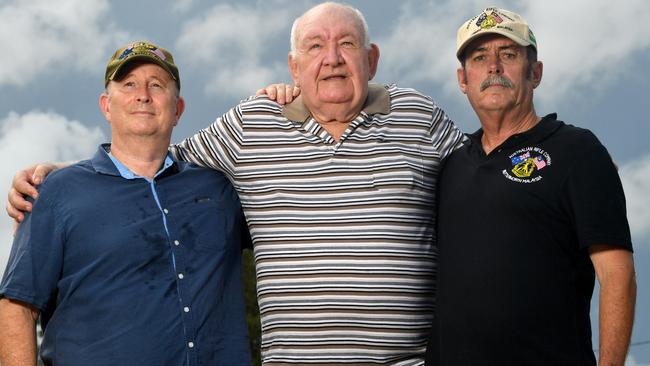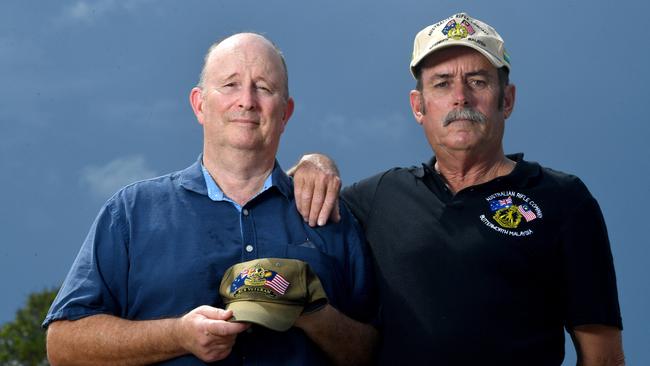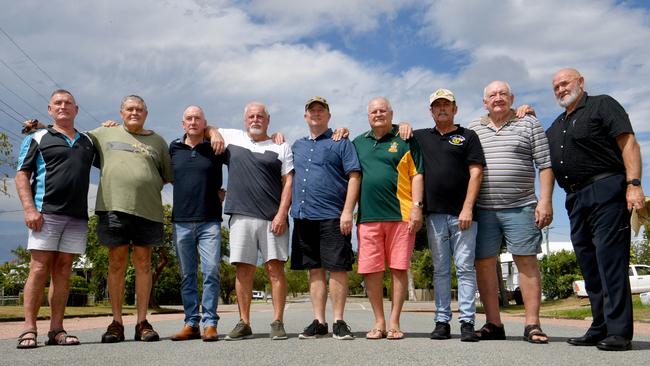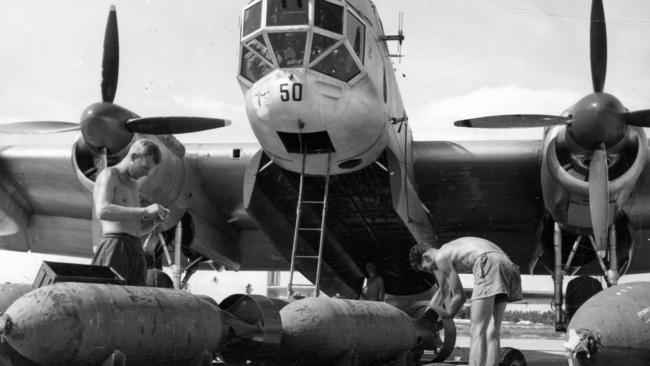Secret documents reveal forgotten Australian Defence Force war veterans in Malaysia
Thousands of Aussie war vets have had their quest for recognition shot down by the government. See why “top secret” documents could change that.

National
Don't miss out on the headlines from National. Followed categories will be added to My News.
They carried guns with live ammunition and were told of a “clear and present danger” threat of attack from armed China-backed jungle insurgents threatening to overrun the allied airfield they were tasked to defend.
But the 9000 Australian Defence Force troops deployed to Malaysia to protect the allied Butterworth Air Base during a Communist insurgency in Malaysia have had their quest for recognition shot down by Defence with their actions formally declared not “warlike” enough.
The declaration in July this year should have closed a 30-year campaign by Army’s Rifle Company Butterworth veterans to have their 1970 to 1989 Malay crisis service recognised and dash hopes of an active service medal and veteran gold card privileges including healthcare and other concessions.
But now a trove of military intelligence cables, memos and maps marked “secret” and “top secret” released under Freedom of Information laws could reverse that.
Critically the documents suggest successive Federal Governments and ADF hierarchy of that period had publicly sought to class the deployment for “training purposes” essentially to ensure the Malaysian public were not upset by the then presence of foreign troops in potential armed conflict on their soil.

It was also designed to downplay the regional stability threat from the China-backed Communist revolutionary rebels in its armed conflict with Malaysian federal security forces.
That threat only dissipated in 1989 when a formal peace accord was signed between the Malaysian Government and the rebels.
Now the vexed question whether to declare a threat – perceived or actual – ever existed will come down to a team of public servants from the Defence Honours and Awards Appeals Tribunal (DHAAT) to classify the armed deployment.

The question on the table – was it “warlike” or “peacetime service”.
“There is no way they can argue it was peacetime service,” Rifle Company Butterworth veteran Ray Fulcher, 65, said.
“They knew what we were there for, we knew what we were there for, it was not training, it was to protect the base and protect the RAAF. We were part of the shared defence plan with Malaysian forces, there to defend the base against an insurgency that was happening in Malaysia throughout that entire period.”

In his 72-page July 2022 submission to the tribunal on behalf of the Defence Department, ADF chief Angus Campbell welcomed the re-examination of the determination the Australian deployments were peacetime service only under non warlike conditions.
“Defence and successive Australian Governments have consistently held that ADF service at Butterworth between 1970 and 1989 and since that time is appropriately classified as peacetime service,” the submission concludes, citing three previous reviews into the issue.
A ruling is expected mid 2023.

WHAT THE SECRET DOCUMENTS REVEAL
On the aerial picture produced by the Australian Joint Intelligence Organisation, the threat was simply stated.
On one side of the sprawling Butterworth Air Base aerial map was a large arrow and the words “Probable Direction of Attack by Night” and another on the opposite side, “Probable Direction of Attack by Day”.
It was October 1975 and the so-called Communist Insurgency Malaysia (1968-1989) was underway with Malaysian government forces in armed conflict against a cohort of Malayan Communist Party rebels and Marxist-Leninist “subversive” revolutionaries, in part backed by the People’s Republic of China.
And in the middle of it were Australian troops tasked with defending Butterworth and its squadron of RAAF fighters and personnel.

While the aerial map was basic, accompanying intelligence reports from the time, were detailed and quite clear about the threat posed from the “CTs” (Communist Terrorists).
“The terrorist has freedom of movement in the civil community, a reasonable wide choice in the selection of targets and types of weapons or nefarious explosive devices which can be used to attack or sabotage personnel, assets and facilities,” one document marked “Secret” states of the “deteriorating situation”.
Butterworth was created by British forces for World War 2 but by 1958 it became the RAAF’s first permanent base outside Australia in the post war period.
At its peak in the 1970s it was home to 5000 personnel at any one time, including crew for fighters, notably the Sabre and later Mirages as well as the Malaysian air force aircraft.

The insurgents had mortars and rockets and while it was the responsibility of Malaysian forces to take the attack to them in the jungles, Butterworth Rifle Company largely made up from Australian infantry troops were tasked with defending the air base.
While the Australian government of the day announced politically Australian troops had been removed from South East Asia, it could not afford to withdraw from Butterworth so three-monthly rotation deployments were branded “training exercises”.
But now released under FOI intelligence reports, suggest otherwise.
“It is possible that the CT could decide to attack the base if the presence of Australian forces became a major political issue in Malaysia or if there was a large-scale civil disturbances and industrial unrest,” one report states, although concludes this was unlikely at that time.
However the report goes on to detail the mass casualties that could be incurred from the estimated force of more than 2000 “terrorists”. The reports also detail the inadequacy of Malaysian forces which had largely failed to put down CT assaults.




